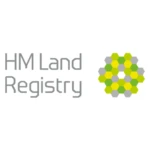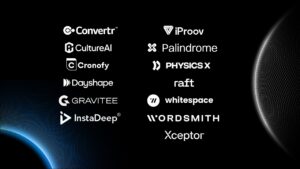
Her Majesty’s Land Registry empowers employees with secure remote working
Her Majesty’s Land Registry (HMLR) was created in 1862 to register the ownership of land and property in England and Wales, which is currently valued at £7 trillion. Safeguarding the ownership of this land enables over £1 trillion of personal and commercial lending to be secured against property and land. As such, HMLR has a unique role and duty in the UK property market, as UK residents and public and private sector organisations rely on access to the register and up to date records. The department itself has around 6,000 employees across the country, with a majority of these employees being office based.
Balancing security and remote working

To help the property market operate, HMLR caseworkers need to be able to update and maintain the Land Register. This was challenged when the onset of COVID-19 severely hindered caseworkers’ ability to continue their work as they weren’t able to get to the office. Therefore, a solution was needed to ensure caseworkers could work from home whilst securely maintaining and updating the land register.
Microsoft and HMLR already work together to help empower employees with productive and collaborative tools. Windows Virtual Desktop (WVD) was quickly identified as a potential remote working solution. It provides the caseworkers with a virtualised Windows 10 desktop that can be accessed from any device. All the applications that the caseworkers depend upon to maintain the register are accessible remotely. The architecture of WVD has meant the solution has been able to be rolled out to 5,500 caseworkers in a matter of weeks.
The caseworkers are the foundation of operations and are instrumental in HMLR’s commitment to their core value: ‘Your Land and property rights; guaranteed and protected’. To continue this commitment, HMLR had to feel confident that WVD and Microsoft could be trusted with sensitive data. WVD separates the caseworkers work environment from the user device. This reduces the risk of sensitive data being left on a personal device. At the foundational level, HMLR can deploy a number of Azure security services without deprecating the performance of the desktop. Additionally, WVD service benefits from the security investments made in the Azure platform. This includes a multi-layered intelligent approach, with security built by design.
Deploying Windows Virtual Desktop for secure remote working
Once HMLR knew that WVD would help securely enable remote working and provide an agile user experience, they moved onto the next step. Technical teams were quickly established to create an initial WVD proof of concept for 20 users. WVD was then rolled out to a further 1,000 case workers. A total of 4,500 users are in scope for the first wave of deployment.
HMLR’s tips to balancing security and remote working
- Start with a proof of concept to make sure it works well for the few before rolling it out to the many.
- Keep security in mind when building the infrastructure from the ground up, make sure you use secure designs and best practices.
- Leverage automation tools in Azure to build and deploy instances quickly.
- Take advantage of the marketplace and native tools to deploy apps and services within hours.
- Embrace the challenge head-on with a can-do attitude and open culture.
In their own words
 “The implementation of a new Azure platform and specifically, Windows Virtual Desktop, has been vital to our ability to maintain critical business services and keep this area of the UK economy moving during the COVID-19 crisis. The solution has not only allowed our staff to keep processing vital casework but has also opened up opportunities for further transformation in the future.”
“The implementation of a new Azure platform and specifically, Windows Virtual Desktop, has been vital to our ability to maintain critical business services and keep this area of the UK economy moving during the COVID-19 crisis. The solution has not only allowed our staff to keep processing vital casework but has also opened up opportunities for further transformation in the future.”
I am extremely proud of what the team have achieved in such a short timescale. To design and implement such an important solution and scale it up for the entire organisation in challenging circumstances has been nothing short of impressive! This has only been achievable through focussed talent and the use of modern, flexible technology available in the Azure platform.” – Andy Crawford, HMLR Principal Technical Architect
“We have really benefited from the ability to build new infrastructure from the ground up. This has enabled us to deploy at speed, using secure designs and best practice without concerns about impacting existing infrastructure. The automation tools within Azure have enabled us to build and deploy instances quickly, enabling us to scale our platform from a few hundred users to thousands with limited effort.” – HMLR Infrastructure Engineer
“The ability to leverage marketplace and native tools have given us fast access to products that in the data hall would take weeks to implement. Using templates, we have been able to deploy them in a few hours. As our entire engineering workforce switched to home working for the first time, Microsoft Teams and the Azure Portal enabled us to carry on as if we were in the same office and maintain our momentum of delivery. We could not have imagined going from 0 to a 4,500 user environment in such a short time.” – HMLR Infrastructure Engineer
A word from Microsoft
Deploying a new secure remote working solution quickly isn’t an easy task. But when you have one that focusses on the employees first, you’re more likely to have a successful deployment. HMLR did this by using WVD to make it easy for employees to access the network and access the information they need securely, and quickly.
“What has really stood out, has been the attitude of all the members of the HMLR team who have designed and implemented a robust and working solution in a timeframe that has enabled HMLR to continue to operate. Given the unprecedented circumstances that we are currently in, this achievement is even more impressive. The HMLR team have embraced the challenge head-on and persisted when faced with setbacks and have taken the opportunity to learn from each step, which will stand them in good stead for the future.”
– Matt Spender, Accounts team, Microsoft.
Find out more
Learn more: Discover the benefits of Windows Virtual Desktop
Read more: Empower employees for secure remote work with Windows Virtual Desktop
Watch the on-demand webinar: The benefits for WVD and how to start your journey
Tools to empower your development team
Read the documentation: How to get started with Windows Virtual Desktop
Explore the learning path: Deliver remote desktops and apps from Azure with Windows Virtual Desktop

About the author
 Sam Stamp works with the central government and works closely with Department for BEIS as a Cloud Solution Architect (CSA) in Infrastructure. Sam has a number of years’ experience as a Microsoft customer and as a solution architect, managing infrastructure teams. This has offered a depth of exposure to the ecosystem of solutions, not just in design but through real world implementation.
Sam Stamp works with the central government and works closely with Department for BEIS as a Cloud Solution Architect (CSA) in Infrastructure. Sam has a number of years’ experience as a Microsoft customer and as a solution architect, managing infrastructure teams. This has offered a depth of exposure to the ecosystem of solutions, not just in design but through real world implementation.




